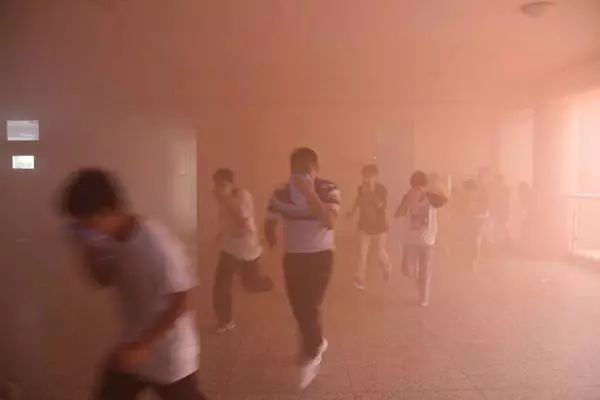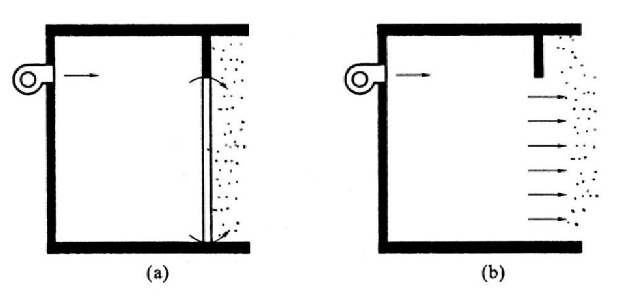

SEARCH
1. The role of smoke control and exhaust system
The smoke control and exhaust system mainly has three functions: (1) fire resistance and fire isolation; ② Conducive to personnel evacuation; ③ Easy to rescue.
Fire separation facilities are only in a certain period of time to prevent the spread of fire, and can divide the internal space of the building into a number of smaller fire space objects (including fire doors, fire Windows, fire shutter, fire valve, smoke exhaust fire valve, smoke hanging wall, etc.).
Smoke control and exhaust system can eliminate smoke in time to ensure smooth evacuation and safe refuge. It can be divided into natural smoke exhaust, mechanical smoke exhaust and mechanical pressurized air supply and exhaust.
2. Fire smoke control
Fire smoke will cause serious harm to the human body, which can be summarized as the physical and psychological harm to people. These two aspects of harm is to hinder personnel evacuation and fire rescue, cause fire chaos, and increase the difficulty of evacuation and rescue. In order to eliminate smoke in time after fire in high-rise buildings and underground works, ensure smooth evacuation, safe refuge, and create favorable conditions for fire rescue work, it is very necessary to set up smoke prevention and smoke exhaust facilities in some high-rise buildings and underground works.
The function of smoke control and exhaust facilities is to control the smoke. The main purpose is to create smoke-free or low-smoke evacuation passages or safety zones within buildings. The essence of flue gas control is to control the reasonable flow of flue gas, that is, to make the flue gas not flow to the evacuation channel, safety zone and non-fire area, but to the outdoor flow.

There are mainly partition or block, smoke exhaust, pressure smoke prevention three methods.
(1) partition or block: walls, floors, doors and so on have the role of partition smoke transmission. In order to prevent the spread of fire and smoke spread, building regulations must be divided into fire zones and smoke zones. The so-called fire zone, refers to the area separated by firewall, floor, fire door or fire shutter, etc., can limit the fire in a certain local area (in a certain time), do not make the fire spread. Of course, the partition of the fire partition also plays a role in the partition of smoke. The so-called smoke partition is the area divided by partition walls or other measures (which can prevent and limit the flow of smoke) in the hallway and room where smoke exhaust measures are set up.
(2) smoke exhaust: the use of natural or mechanical forces, the smoke is discharged to the outdoor, called smoke exhaust. The exhaust of natural forces is called natural exhaust; Smoke exhaust using mechanical (fan) force is called mechanical smoke exhaust. There are two types of smoke exhaust sites: fire zones and evacuation channels. The purpose of smoke exhaust in the fire area is to exhaust the smoke of the fire to the outdoor, which is conducive to the evacuation of people in the fire area and the rescue of fire fighting personnel. The smoke exhaust of the evacuation channel is to exclude the smoke that may invade, so as to ensure the smoke-free or less smoke in the evacuation channel, so as to facilitate the safe evacuation of personnel and the passage of fire fighting personnel.
(3) pressurized smoke prevention: pressurized smoke prevention is to use the fan to send a certain amount of outdoor air into a room or channel, so that the indoor maintain a certain pressure or a certain flow rate at the door, in order to avoid the invasion of smoke. The following figure shows two cases of pressure and smoke prevention. In figure A, when the door is closed, a certain positive pressure value is maintained in the room, and air flows out of the door or other cracks to prevent the invasion of smoke. Figure B shows that when the door is opened, the air into the pressurized zone flows out of the door at a certain speed to prevent the inflow of smoke. When the flow rate is low, smoke may flow into the room from the upper part. From the analysis of the above two cases, it can be seen that in order to prevent flue gas from flowing into the pressurized room, it is necessary to achieve: (1) when the door is opened, the door has a certain outward wind speed; ② When the door is closed, there is a certain positive pressure value in the room.

As shown above, pressure smoke control
(a) when the door is closed; (b) when the door is opened
Related